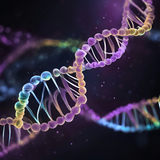Production Techniques for Recombinant Proteins: A Comparative Study
Introduction
Recombinant protein production is a cornerstone of modern biotechnology, enabling the synthesis of proteins for therapeutic, industrial, and research purposes. This article compares various expression systems used for recombinant protein production, highlighting their advantages and limitations.
Bacterial Expression Systems
- Advantages: High yield, cost-effective, rapid growth, well-established protocols.
- Limitations: Lack of post-translational modifications, protein folding issues.
- Examples: E. coli is the most commonly used bacterium for protein expression.
Yeast Expression Systems
- Advantages: Capable of post-translational modifications, scalable, relatively inexpensive.
- Limitations: Hyperglycosylation can affect protein function, slower growth compared to bacteria.
- Examples: Pichia pastoris and Saccharomyces cerevisiae.
Insect Cell Systems
- Advantages: Efficient post-translational modifications, high protein yield, suitable for complex proteins.
- Limitations: Higher cost, more complex cultivation requirements.
- Examples: Baculovirus expression vector system (BEVS) using Sf9 or Sf21 cells.
Mammalian Cell Systems
- Advantages: Authentic post-translational modifications, suitable for therapeutic proteins.
- Limitations: High cost, slower growth, complex culture conditions.
- Examples: Chinese hamster ovary (CHO) cells and human embryonic kidney (HEK) cells.
Factors Influencing System Choice
- Protein Characteristics: Complexity, size, and required modifications.
- Application: Therapeutic, industrial, or research use.
- Production Scale: Laboratory, pilot, or industrial scale.
Case Studies
- Insulin Production: Transition from bacterial to mammalian systems for improved functionality.
- Monoclonal Antibodies: Preferential use of mammalian cells for therapeutic applications.
Latest Advancements
- Synthetic Biology: Engineering organisms with enhanced capabilities for protein production.
- CRISPR/Cas9: Genome editing to optimize host strains for higher yields.
Conclusion
Selecting the appropriate expression system is crucial for successful recombinant protein production. Understanding the strengths and weaknesses of each system allows for informed decisions tailored to specific protein requirements.
26th Jun 2024
Recent Posts
-
Can mNGS Replace Culture?
In microbiology and infectious-disease work, culture has been the gold standard for over a century. …30th Sep 2025 -
Post-Translational Modifications: The Hidden Layers of Protein Regulation
Proteins are the workhorses of cellular biology, performing a wide array of functions that are essen …18th Oct 2024 -
Unveiling the Structure-Function Relationship in Proteins: Why Shape Matters
Proteins are fundamental biomolecules that drive virtually every biological process within an organi …18th Oct 2024



